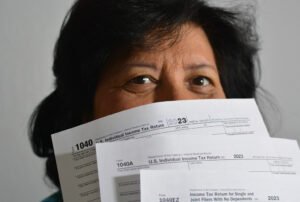

The US economy has long favored large firms. And, at least so far, the pandemic has only served to accelerate a preexisting trend of increased concentration of wealth in fewer and fewer firms. Partially, this is a product of the pandemic-induced shift to digital sales; firms like Amazon, as well as big box firms with extensive digital capacity like as Target, Walmart, and Best Buy, have thrived financially. But public policy has earned a big assist—an unlimited Fed window for corporations and Hunger Games-style rationing of paycheck protection program funds for everyone else. Meanwhile, early estimates suggest that a minimum of 100,000 small businesses have closed forever. Business owners of color seem likely to be particularly affected; an early study found a 40 percent decline of Black working business owners between February and April 2020 compared to 22 percent of working business owners over all.
It is still early days in this pandemic, but even as the nation suffers from Depression-level unemployment, with 100,000 Americans (and counting) losing their lives, our modern-day capitalists seem to be doing just fine, according to data gathered by the Institute of Policy Studies and Americans for Tax Fairness. All told, the researchers conclude that the net worth of the nation’s wealthiest has increased by $434 billion since the pandemic began, as the stunning chart below reveals:
| Name | Net Worth 3/18 (Billions) | Net Worth 5/19 (Billions) | Change in % | Firm/industry |
| Jeff Bezos | $113.0 | $147.6 | 30.6% | Amazon |
| Bill Gates | $98.0 | $106.0 | 8.2% | Microsoft |
| Mark Zuckerberg | $54.7 | $80.0 | 46.3% | |
| Warren Buffett | $67.5 | $68.1 | 0.9% | Berkshire Hathaway |
| Larry Ellison | $59.0 | $66.0 | 11.9% | Oracle |
| Steve Ballmer | $52.7 | $65.5 | 24.3% | Microsoft |
| Michael Bloomberg | $48.0 | $60.3 | 25.6% | Bloomberg |
| Walton family | $163.1 | $165.6 | 1.5% | Walmart |
| McKenzie Bezos | $36.0 | $48.0 | 33.3% | Amazon |
| Koch family | $76.4 | $92.6 | 21.2% | Koch Industries |
| Elon Musk | $24.6 | $36.4 | 48.0% | Tesla |
| Sheldon Adelson | $26.8 | $31.3 | 16.8% | Casinos |
| Michael Dell | $22.9 | $28.7 | 25.3% | Dell computers |
| John Menard | $11.5 | $18.7 | 62.6% | Home improvement |
| Robert Murdoch | $14.9 | $16.9 | 13.4% | Fox network/media |
All of which leads us to ask: how do we create another way?
There are many pieces to answering that question. It is, frankly, not possible to provide a complete answer in a single article. We have written before, for example, about policy opportunities. We have called for the need to center racial equity in our responses. We have advocated for ending mass incarceration and replacing it with a system centered on restorative justice. We have published articles highlighting the need to raise taxes on wealth. We have called for implementing polices that provide for universal basic income, paid sick leave, and health care, to name few.
We have not written much about restructuring capital markets. Yet the way we allocate investment helps explain why small businesses suffer and big businesses thrive—and why small businesses owned by people of color most often stay small, if they survive at all.
Prior to the pandemic, about $56 trillion was invested in Wall Street stocks, bonds, and mutual funds—either directly or by pension funds—according to a report on community investment coauthored by Brian Beckon, Amy Cortese, Janice Shade, and Michael Shuman. Titled Community Investment Funds: A How-To Guide for Building Local Wealth, Equity, and Justice, and published by the National Coalition for Community Capital (NC3) and the Solidago Foundation, the report aims to document efforts to invest off Wall Street and identify pathways to further local business growth.
Typically, investment reform within Wall Street garners far more attention. You might have heard of impact investing, or the use of environmental, social, and governance (ESG) criteria in investment. The Global Impact Investing Network estimates that in 2018, impact investing assets under management totaled $502 billion at 1,340 organizations worldwide, while investments firms employing environmental, social, and governance (ESG) metrics invest $12 trillion of that $56 trillion.
But only one in three Americans employed in the private sector work for firms listed on Wall Street. Community capital, notes Jeff Rosen of the Solidago Foundation in his preface, seeks “to catalyze positive social outcomes by focusing on communities where capital usually cannot be found.” Another difference, notes Rosen, is that community investment is firm—not investor—focused, with a mission “not to enrich investors, but to finance significant social change in communities and serve end users, while giving investors an opportunity to make a modest rate of return.”
If even $15 trillion of that $56 trillion in investment capital were shifted from Wall Street to Main Street, a city of 100,000 would have about $5 billion in new investment capital. As the authors explain, “Put another way, we are overinvesting in Wall Street and underinvesting in Main Street. Many of the challenges with which communities struggle—economic, environmental, social, or political—could be remedied, or at least made more manageable, if we changed how we invest our savings.”
For the sake of argument, let’s say you’re persuaded. Despite the pandemic, you have some savings available to invest and wish to invest in your community. Can you do so?
There are two answers to that question. If you’re an accredited investor—that is, you earn more than $200,000 a year ($300,000 a year if a couple) or own over $1 million in assets (not including your home)—then there are options galore. Maybe five percent of Americans are considered “accredited” under this standard.
But if not, your options are limited, typically to businesses of “friends and family”—a fact that deeply reinforces racial wealth inequality, since white business owners typically have much wealthier friends and family than business owners of color, a byproduct of the fact that median white household wealth is far greater than median Black household wealth. How much greater? Data from 2013 found that the median white family had $147,000 in wealth versus $3,600 for the median black family.
In recent years, local investment options have increased some. For example, in 2012, Congress passed the Jumpstart Our Business Startups (JOBS) Act, which allowed for crowdfunding investment by non-accredited investors of up to $2,200 a year.
In 2018, crowdfunding investments made under the still relatively new JOBS Act totaled $109 million from 147,448 people, roughly two millionths of $56 trillion. Crowdfunding, the authors write, may be a “huge revolution in the making. But in the larger scheme of things this revolution is practically invisible. Of the 330 million people living in the United States, fewer than one in a thousand are taking advantage of it.”
How could this change? In their report, Beckon and his colleagues looked at 10 case studies of local investment funds, only one of which is more than five years old.
Community investment today, in short, is at a similar place as where community development financial institutions (CDFIs) were decades ago. CDFIs today have an estimated $180 billion in assets. But as Nancy Andrews, former CEO of the Low-Income Investment Fund in San Francisco, once wrote for Brookings, “In 1985, there were 21 community loan funds with combined capital resources of $29 million.” Even adjusting for inflation, that’s less than $75 million in 2020 dollars.
Sign up for our free newsletters
Subscribe to NPQ's newsletters to have our top stories delivered directly to your inbox.
By signing up, you agree to our privacy policy and terms of use, and to receive messages from NPQ and our partners.
Might community investment emulate this trajectory? The report authors certainly believe so. The report is divided into four sections. Shuman is the lead author for the introduction. Cortese is the lead author for the case study chapter. Shade is the lead author of the “how to” chapter. And Beckon is the lead author of the legal chapter. Here I will focus mainly on the case study and how-to sections.
An overview chart of a half-dozen profiled funds is provided below. While the case study chapter profiles ten funds, three of them to date only accept investments from accredited investors and one sets the minimum investment level at $10,000, which evidently limits small investor access.
| Fund Name | Location | Focus | Founded |
| Boston Impact Fund | Boston, MA | Economic justice | 2017 |
| Boston Ujima Fund | Boston, MA | Entrepreneurs of color | 2018 |
| East Bay Permanent Real Estate Cooperative | Oakland, CA | Affordable housing | 2017 |
| Northeast Kingdom Prosperity Fund (NEK) | St. Johnsbury, VT | Small local businesses | 2019 |
| Pioneer Valley Grows Investment Fund
(“PV Grows“) |
North Deerfield, MA | Local food businesses | 2015 |
| Runway Project | Oakland, CA | Entrepreneurs of color | 2017 |
Most of the above funds are set up as some form of a nonprofit loan fund, although East Bay Permanent Real Estate Cooperative is, as its name suggests, set up as a cooperative, and the NEK Fund is set up as a charitable pooled income fund, which functions like a charitable remainder trust. In such a fund, investors donate the principal, earn returns during their lives, but with the proviso that the principal will be absorbed by the nonprofit upon death. The sizes of the funds vary. A typical first-round goal is to raise $2–10 million, although many envision raising more capital over time.
Beyond encouraging investments from folks who are not wealthy, how do these community investment funds differ from conventional private equity funds? While each fund is different, here are some of the changes in practice being made:
- Investment committees often include people with grassroots backgrounds. Both Boston Impact Initiative and Boston Ujima Project have this feature.
- Returns are often set higher for non-accredited investors than accredited investors. Again, both of the featured Boston investment funds have this characteristic.
- An effort is made to reduce the risk of loss to nonaccredited investors by raising philanthropic support for loan loss reserves.
- A strong focus is placed on providing technical assistance to “de-risk” the riskier investments that these local investment funds are intended to make. This is a strong feature of many of these funds, especially PV Grows and the Runway Project.
Sometimes, too, these funds can collaborate with other funds and CDFIs. This can be seen in the case study profiles. For instance, the Boston Impact Fund consciously modeled itself after PV Grows. Afterward, it assisted with the launch of the Boston Ujima Fund and is now supporting the growth of similar funds in other cities.
A proposed collaboration in Oakland, California, involving the Runway Project; the Revolutionary Economy for All Local People’s Fund (REAL)—a philanthropy-backed loan fund—and Community Vision, a CDFI, is even more intriguing. Essentially, REAL Fund, which Community Vision will manage, aims to provide a ladder of support for businesses owned by people of color, with smaller loans (under $50,000) underwritten by the Runway Project and larger loans underwritten by Community Vision.
How to Grow the Movement
Janice Shade, who herself has supported the creation of the NEK Fund in Vermont, outlines key steps for launching community investment funds. The first step, Shade emphasizes, is building a team. Shade advises recruiting people from financial institutions, philanthropy, community nonprofits, local government, and anchor institutions (e.g., hospitals and/or universities). Philanthropy and anchor institutions, she adds, are critical, because they can often be core fund investors.
Additional steps include defining the fund objectives, developing a workable business model, defining the legal structure, and planning for operational issues before launch.
One challenge Shade highlights is that while small investors are core to the idea of community investing, small investors add complexity. “The more people involved, the more administrative hassles, the more customers to ‘care for and feed,’ and the more things that can go wrong.” This speaks to larger-order challenges of whether you can use the “master’s tools to destroy the master’s house”—the poet Audre Lorde being a famous skeptic. Of course, before we cast too skeptical an eye, it might be worth recognizing that the same critique can be made of philanthropy as well.
In any case, for those who try, Shade advocates a mix of small and large investors, providing a sample chart for a $5 million fund which will surely look familiar to nonprofit development officers accustomed to raising donations for a capital campaign:
| Investment Amount | No. of investors | Subtotal | Cumulative total |
| $250,000 | 3 | $750,000 | $750,000 |
| $100,000 | 10 | $1,000,000 | $1,750,000 |
| $50,000 | 20 | $1,000,000 | $2,750,000 |
| $25,000 | 30 | $750,000 | $3,500,000 |
| $10,000 | 50 | $500,000 | $4,000,000 |
| $5,000 | 100 | $500,000 | $4,500,000 |
| $1,000 | 250 | $250,000 | $4,750,000 |
| $500 | 500 | $250,000 | $5,000,000 |
| Total | 963 | $5,000,000 |
Shade also provides a long checklist of operational issues to consider—everything from legal documents to investment term sheets to marketing and promotions. She also adds a warning to expect to lose money before you make money.
Ultimately, Shade expresses confidence that creating self-sustaining funds is possible, which will ultimately allow communities “to focus on what’s really important: mission and impact.”
Next Steps and Continuing Questions
Unsurprisingly, the report concludes with a call to “consider including a community investment fund (CIF) in your own social-change agenda.” More surprisingly, the authors also close with a set of questions, some of which directly challenge their own assumptions. For example, they ask, “What are the ethics of mobilizing grassroots investors?” The authors quote Pierre Joseph, a former Solidago Foundation program officer, who says, “Community investment is a great notion, but I personally would not want to ask folks [to invest] if they’re just struggling to get by. Sure, a symbolic $100 investment from anyone is probably fine. But $1,000? $10,000?” It is, simply put, hard to “democratize finance” when wealth inequality is so stark.
In their conclusion, the authors provide some ideas on how to address this risk question. For instance, a “fund of funds” that invested in multiple community investment funds could help diversify investments and thus spread out risk.
Policy, of course, could make a huge difference. For example, the authors note that the Canadian province of New Brunswick a few years ago “enacted a 50-percent tax credit for local investment. For every dollar over $1,000 a resident invests in a local business, they receive 50 cents off their provincial taxes.” Other policies, such as a law that allows for the creation of statewide mutual funds, might also spread risk.
Ultimately, changing mindsets is key. It’s hard to beat something with nothing, so building an alternative to Wall Street is critical. At least prior to the pandemic, the authors conceded that, “99 percent of Americans think that the best way to invest in their future is to place their money in global companies on Wall Street—even the tens of millions who distrust Wall Street. They’re unaware of the alternatives surrounding them.” Shifting the nation’s $56 trillion in investment capital into local community funds, they contend, could have a “huge impact on community well-being.”













